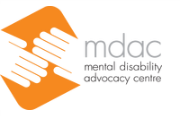Scorecard
Article 19 of the UN Convention on the Rights of Persons with Disabilities (CRPD) guarantees the right of all persons with disabilities to live independently in the community. In turning this right into reality, Article 19 requires government to take action in four key areas:
- To recognise and give real effect to the choices of people with disabilities about where and with whom they choose to live;
- To ensure access to individualised support services for people with disabilities;
- To ensure that mainstream services are accessible to people with disabilities;
- To take concrete actions to close institutions which segregate people with disabilities.
The following table sets out four clusters of indicators which reflect these obligations.[4] Each indicator breaks down different elements to the right to community living, followed by a ‘measure’ in the form of a question. A conclusion for each indicator is provided, based on all the information made available. Indicators shaded red show that insufficient steps have been taken; those shaded orange show that there have been some promising steps but that more effort is required; green rows show that substantial and comprehensive action has been taken. More detailed explanations are provided for each indicator in the sections which follow.
|
Cluster One: Community living and choice
The indicators in this cluster reflect the requirements of Article 19(a) of the CRPD which states:
Persons with disabilities have the opportunity to choose their place of residence and where and with whom they live on an equal basis with others and are not obliged to live in a particular living arrangement. |
|||
|
No. |
Indicator |
Measure |
Conclusion |
|
1(A) |
People with mental disabilities are not required to live in institutions. |
How many people with mental disabilities live in institutions? |
Over 7,000 people with mental disabilities live in institutions. There has been no significant decrease in people living in institutions in recent years. |
|
1(B) |
People with mental disabilities must get access to the same housing options that are available to the general population. |
What housing options are available to people with mental disabilities? |
For many people with mental disabilities, institutionalisation continues to remain the main form of housing made available. New ‘community-based’ residential services can be within the grounds of larger social care or psychiatric institutions. |
|
1(C) |
There should be a moratorium on new admissions to social care institutions. |
Are there limits or a moratorium on new admissions to institutions? |
No, there is no limit on new admissions to Bulgaria’s residential institutions. |
|
1(D) |
The choices of people mental disabilities about where and with whom they live are recognised and validated by the law. |
Does the law respect the choices of people with disabilities about where and with whom they live and which services they receive? |
People under full or partial guardianship are denied the right to decide about where or with whom they live. |
|
1(E) |
The law recognises the right of people with mental disabilities to enter contracts for accommodation and the use of social services. |
Can people with mental disabilities enter into contracts and agreements for disability-related supports, credit agreements to purchase housing, rental or other housing agreements? |
People under guardianship cannot enter into contracts. |
|
1(F) |
People with mental disabilities can access support to choose where and with whom they live. |
Do people with disabilities have access to support to enable them to make decisions about where and with whom to live or what support services to access? |
No such support is provided. |
|
1(G) |
People with mental disabilities can challenge decisions made by others about where and with whom they live. |
Can people with mental disabilities access effective mechanisms if they want to complain about their right to live in the community? |
No, there are no mechanisms available to people with mental disabilities to challenge a denial of their right to live in the community. |
|
Cluster Two: Access to individualised support services
The indicators in this cluster reflect the requirements of Article 19(b) of the CRPD which states:
Persons with disabilities have access to a range of in-home, residential and other support services, including personal assistance where necessary to support living and inclusion in the community, and to prevent isolation or segregation from the community. |
|||
|
No. |
Indicator |
Measure |
Conclusion |
|
2(A) |
People with mental disabilities have a personal budget enabling them to choose the support they need. |
Are personal budgets available which enable people with mental disabilities to choose the appropriate support they need to live in the community? |
No, people with disabilities are not provided with personal budgets. |
|
2(B) |
Personal assistance is provided to people with mental disabilities to support them to live in the community. |
Is personal assistance available to support people with mental disabilities to remain and live in the community? |
The government funds personal assistance, but primarily as a way of reducing unemployment. In practice, relatives are ‘employed’ as personal assistants. |
|
2(C) |
People with mental disabilities receive support to access funding or specialised support services. |
Is assistance available to people with mental disabilities to access funding or other support services? |
No such support is available. |
|
2(D) |
Financial and practical support is available to families and carers of people with mental disabilities. |
Is support available to families/carers of people with mental disabilities? Examples include benefits, remuneration of family members for providing personal assistance, and day care. |
Day care and respite services exist for some people. No specific financial support is provided to relatives or carers, unless they are ‘employed’ as personal assistants (see 2(B) above). |
|
2(E) |
Day services are provided for people with mental disabilities in a way which supports their inclusion in the community. |
Are day services provided that can support people with mental disabilities to stay in the community? |
Day care services exist, but there is no official information on the geographical scope or accessibility of these services. |
|
2(F) |
Government funding is used to develop community-based services rather than funding residential institutions. |
Does the government manage its budget in a way which advances the right of people with disabilities to live in the community? |
The Bulgarian government spends significantly more money on the maintenance of institutions than on the development of individualised community-based services, including substantial amounts of EU funding. |
|
Cluster Three: Access to mainstream services
The indicators in this cluster reflect the requirements of Article 19(c) of the CRPD which states:
Community services and facilities for the general population are available on an equal basis to persons with disabilities and are responsive to their needs.
|
|||
|
No. |
Indicator |
Measure |
Conclusion |
|
3(A) |
People with mental disabilities are guaranteed access to education in mainstream and inclusive settings. |
Do people with mental disabilities get access to mainstream education? Is it inclusive and responsive to their individual needs?
|
Although the right to inclusive education for children with disabilities is enshrined in law, many children with mental disabilities are educated in segregated or institutional environments. |
|
3(B) |
People with mental disabilities are supported to access the open labour market. |
Do people with mental disabilities get access to mainstream employment? Is the employment system sufficiently inclusive? |
No. The majority of people with mental disabilities are excluded from the labour market. |
|
Cluster Four: Transition from institutions to the community
The indicators in this cluster reflect the obligation of governments to take concrete steps to move away from congregate, institutional models of accommodating people with mental disabilities, towards supporting them to live independently in the community within a reasonable timeframe.
|
|||
|
No. |
Indicator |
Measure |
Conclusion |
|
4(A) |
The government has adopted a national community living strategy that effectively advances the right to live in the community for all people with mental disabilities. |
Is there a satisfactory national community living strategy? |
No, and progress is extremely slow. While there is a national deinstitutionalisation strategy, very small numbers of people with mental disabilities have left institutions. |
|
4(B) |
The government has undertaken pilot projects to develop models for moving people out of institutions and into the community. |
Are there pilot projects on community living? Are they effective and inclusive enough? |
Yes, however the number of projects are small and promising practices have not been scaled up to benefit more people with mental disabilities. |
[4] The indicators have been drawn from: Commissioner for Human Rights of the Council of Europe, “The right of people with disabilities to live independently and be included in the community”, 12 March 2012, CommDH/IssuePaper(2012)3, available at https://wcd.coe.int/com.instranet.InstraServlet?command=com.instranet.CmdBlobGet&InstranetImage=2397433&SecMode=1&DocId=2076280&Usage=2 (last accessed: 23 September 2014).

